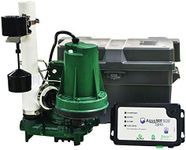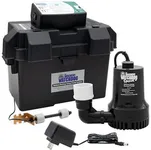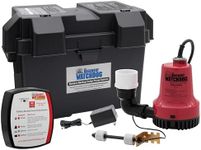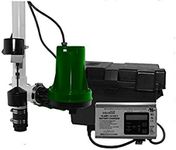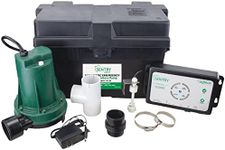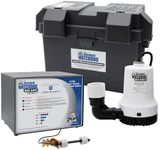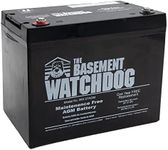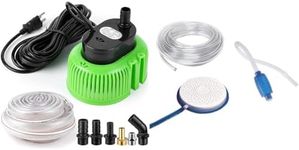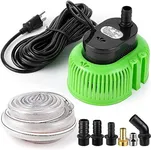Buying Guide for the Best Sump Pump Battery Backups
Choosing the right sump pump battery backup is crucial to ensure your basement stays dry during power outages or pump failures. A sump pump battery backup system provides an additional layer of protection by keeping your sump pump running when the primary power source is unavailable. To make an informed decision, you need to understand the key specifications and how they relate to your specific needs. Here are the essential specs to consider when selecting a sump pump battery backup system.Battery TypeThe battery type is important because it determines the longevity and reliability of the backup system. Common types include lead-acid, AGM (Absorbent Glass Mat), and lithium-ion batteries. Lead-acid batteries are cost-effective but require regular maintenance. AGM batteries are maintenance-free and have a longer lifespan than lead-acid batteries. Lithium-ion batteries are the most advanced, offering the longest lifespan and highest efficiency, but they are also the most expensive. Choose a battery type based on your willingness to perform maintenance and your need for long-term reliability.
Battery CapacityBattery capacity, measured in ampere-hours (Ah), indicates how long the battery can power the sump pump. A higher capacity means the battery can run the pump for a longer period during a power outage. For small basements or areas with low water inflow, a battery with a capacity of 40-60 Ah may suffice. For larger basements or areas with high water inflow, consider a battery with a capacity of 75-100 Ah or more. Assess the size of your basement and the typical water inflow to determine the appropriate battery capacity for your needs.
Pump CompatibilityPump compatibility ensures that the battery backup system works seamlessly with your existing sump pump. Some battery backup systems are designed to work with specific brands or models, while others are more universal. Check the specifications of your sump pump and the battery backup system to ensure they are compatible. If you are unsure, consult the manufacturer or a professional to avoid any compatibility issues.
Run TimeRun time refers to how long the battery backup can keep the sump pump running during a power outage. This is crucial for areas prone to extended power outages. Run time is influenced by battery capacity and the power consumption of your sump pump. For short outages, a run time of 4-6 hours may be sufficient. For longer outages, look for systems that offer 8-12 hours or more of run time. Consider the frequency and duration of power outages in your area to determine the necessary run time.
Charging TimeCharging time is the duration it takes for the battery to recharge fully after being depleted. Faster charging times are beneficial as they ensure the battery is ready for the next power outage sooner. Charging times can vary from a few hours to over 24 hours, depending on the battery type and charger. If you live in an area with frequent power outages, opt for a battery backup system with a shorter charging time to ensure continuous protection.
Alarm SystemAn alarm system alerts you when the battery backup is activated or if there is an issue with the sump pump. This feature is important for timely intervention and maintenance. Alarms can be audible, visual, or even connected to your smartphone for remote notifications. Choose a system with an alarm that suits your preferences and ensures you are promptly informed of any issues.
Ease of InstallationEase of installation refers to how simple it is to set up the battery backup system with your existing sump pump. Some systems are designed for DIY installation, while others may require professional assistance. If you are comfortable with basic electrical work, a DIY-friendly system may be suitable. Otherwise, consider a system that offers professional installation services to ensure proper setup and functionality.
![WAYNE - 1/2 HP Basement [Sump] [Pum](https://images-proxy.bestreviews.guide/saeX_nQo4HYYFHCOO0cLtOoGIKA=/0x150/https://m.media-amazon.com/images/I/41QwOPf-mFL._AC_CX679_.jpg)


